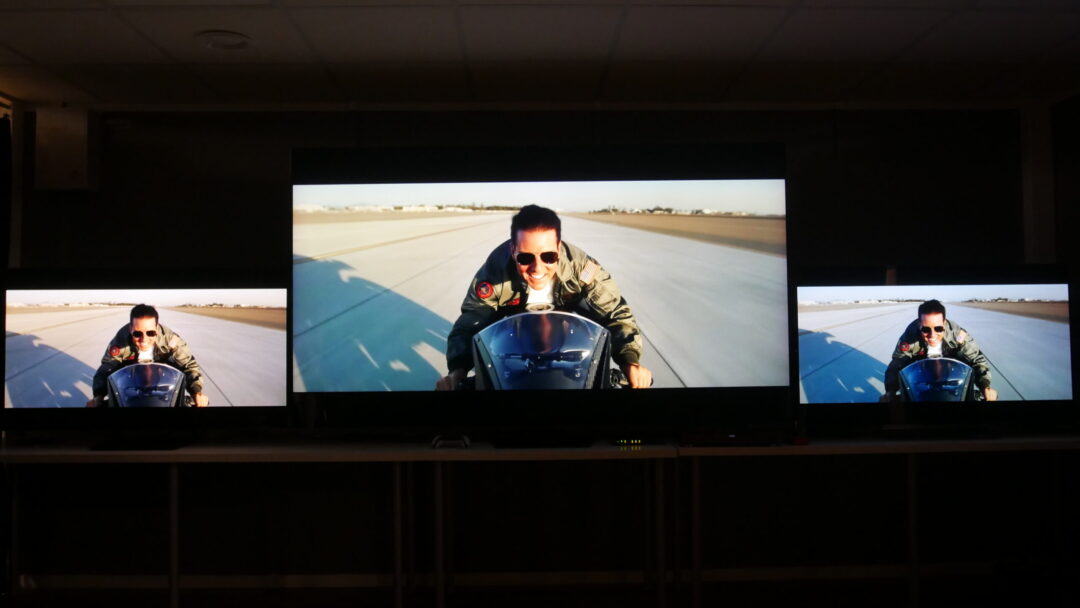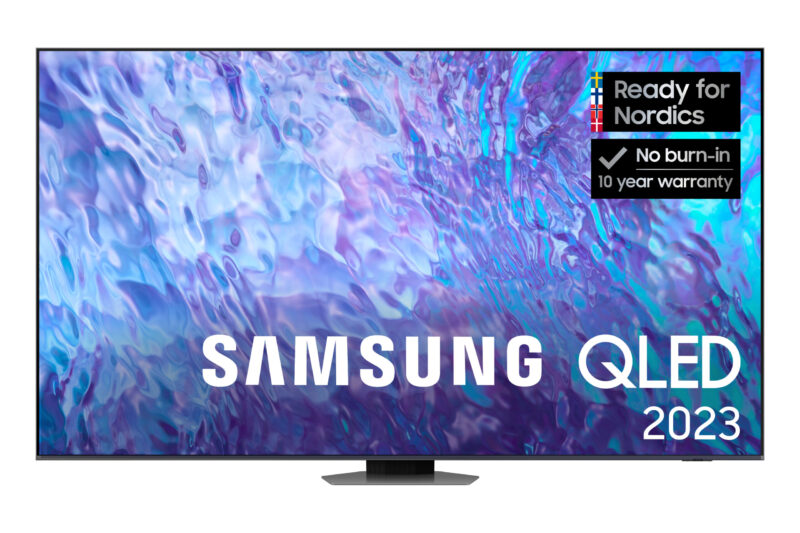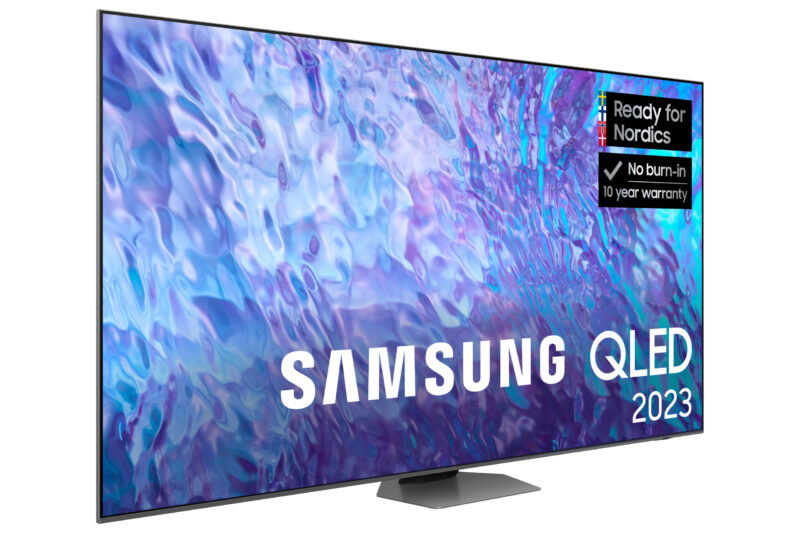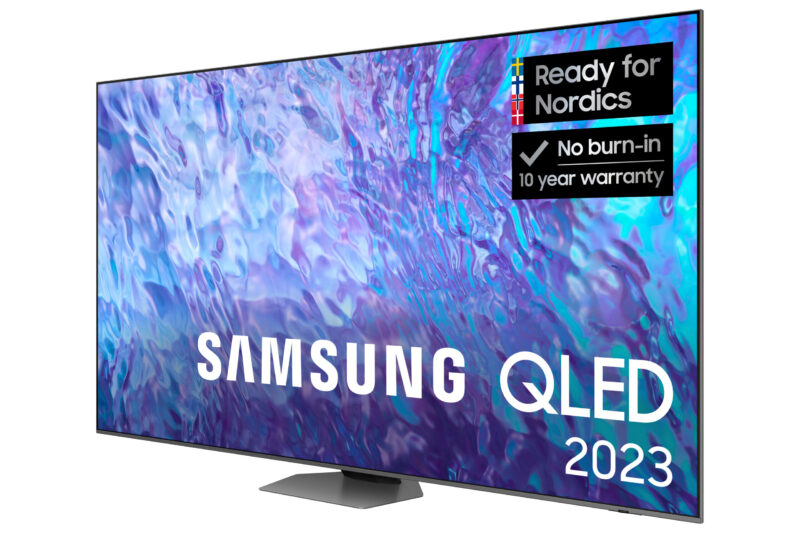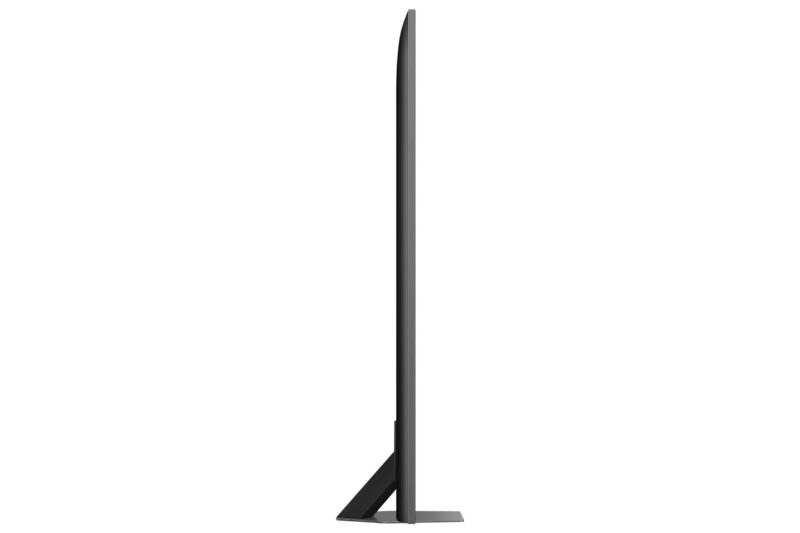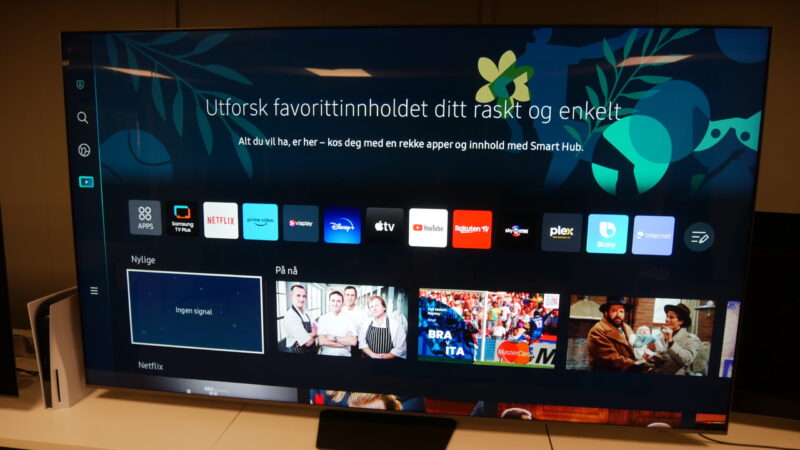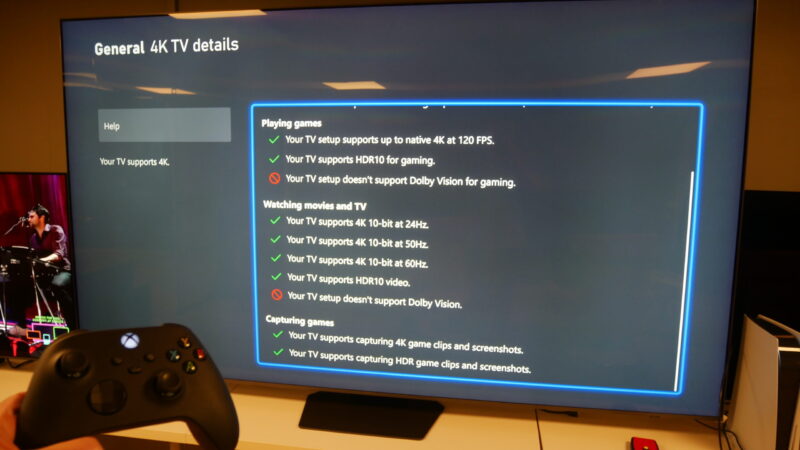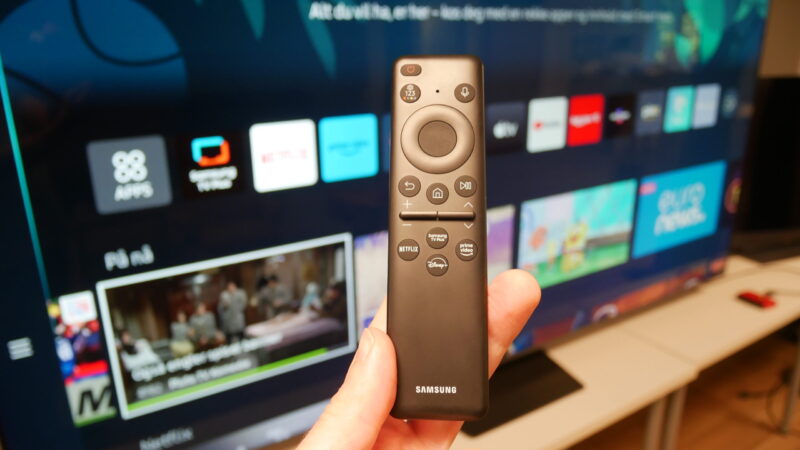There’s an increasing degree of “gigantomania” in the TV industry at the moment, as more manufacturers have jumped on the trend of offering huge TV screens for home use. TCL led the way with the launch of the 98C735 last year, and now Samsung is also getting in on the big screen action. The model we received for testing – the Samsung TQ98Q80C – is the largest in the Q80C series, measuring 98 inches to be exact!
98 inches, you say?
TV screens of this size were practically unattainable a few years ago, but now prices have come down to a level where more people can afford them.
These are not TVs for the “average person”, but for enthusiasts with an above-average interest in movies, series or sports. For example, if you want to build a home theater or entertainment center and have plenty of space available, this can be a great alternative to a projector and screen thanks to its high brightness.
If nothing else, the introduction of 98-inch TVs has probably made more people realize the benefits of a large TV. Because once you’ve experienced the sight of a gigantic 98-inch in the store, you’ll probably opt for something bigger than 55 inches next time… !
Samsung TQ98Q80C
The colossal Samsung display has several technical similarities to the TCL 98C735 we previously tested. It uses a 4K resolution (3840 x 2160) LCD panel capable of frame rates of up to 120 Hz, and inside is a direct LED backlight with local dimming.
Samsung doesn’t specify how many dimming zones the screen has, but our experience suggests around 200. The Q80C also has a color filter with Quantum Dots (hence the “Q” in the model name), which contributes to a wider color spectrum. Image processing is controlled by a Neural Quantum Processor 4K.
This isn’t Samsung’s first 98-inch: the Korean manufacturer launched the QE98Q950R 8K monitor back in 2019, but with a price tag of around €50,000, it obviously wasn’t a big seller.
More recently, we’ve seen models like the 4K monitor 98QN90A at around €18,000, and with the introduction of the 98Q80C, the price now drops to €8,000.
But that’s still a lot more money than the competitor from TCL (98C735), which cost €4,800 when it was launched last year, and has since been priced even lower.
We can probably expect the Samsung monitor to get a slightly more comfortable price during the fall and winter, but probably not as low as TCL. The big question is whether the Q80C can offer something more for the extra money?
Design
For such a colossal TV, the TQ98Q80C has a relatively slim form factor. The screen is surrounded by a narrow metal frame and the image extends almost all the way to the edges. It’s just under 5 centimeters deep from the side, with a smooth backside that’s free of protruding parts.
Another clever detail of this large screen is the stand it sits on. While the TCL 98C735 has a wide leg position with feet mounted at the edges, Samsung has opted for a slim, central base for the Q80C. This makes it much easier to position the TV.
The base is made from a combination of metal and hard plastic and snaps into place without the use of screws. It’s still sturdy enough to keep the screen stable.
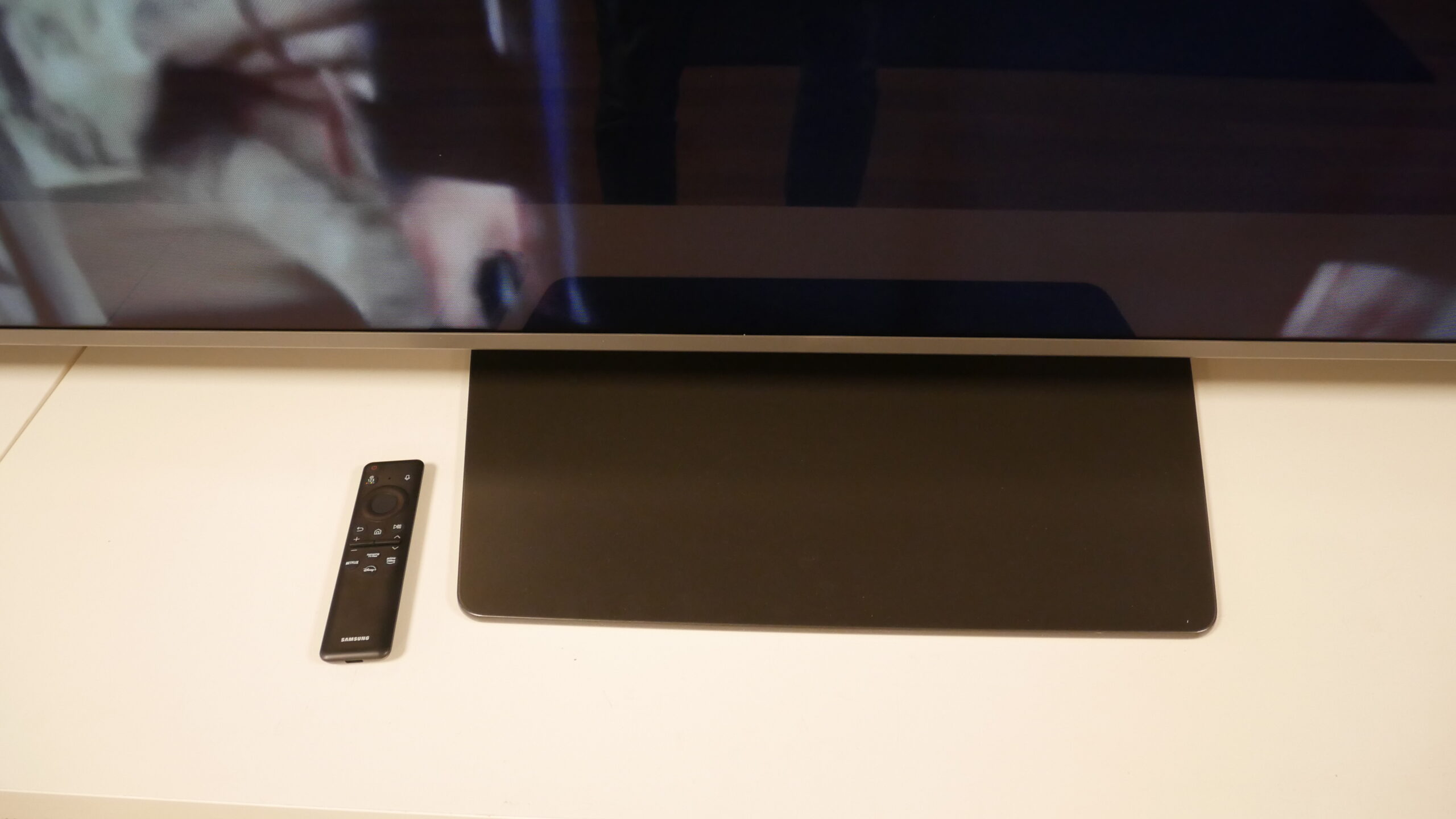
No One Connect
However, the Q80C has to do without Samsung’s discrete One Connect box, and it’s definitely a miss on a large screen like this. Partly because it’s heavy to move, and partly because the connectors on the back can be hard to reach.
The connectors are located on the right side and are sideways to save space. This makes it possible to mount the monitor close to the wall if desired.
If wall mounting is the plan, we recommend a bracket that allows the monitor to be pulled out as needed. In this case, the TQ98Q80C will need a VESA wall mount with dimensions 600 x 400 mm.
Usability and upgrades
The Q80C comes with Samsung’s familiar Tizen user interface, which offers a wide range of apps and services. You’ll find a host of different streaming services that you can subscribe to, as well as Samsung TV+, which offers a range of free TV channels.
Samsung’s menu system has undergone several facelifts and the current version is both clear and quick to use. The different apps load quickly. You can also customize the menus and move around the settings and programs you use the most.
When it comes to connectivity, the Samsung Q80C has an advantage over TCL’s 98-inch display. All four HDMI inputs support the 2.1 standard with capacity for 4K/120Hz video signals, while TCL only uses two out of four. This means extra space for high-resolution video sources such as 4K Blu-ray, PS5 and Xbox Series X.
The Samsung monitor also has a well-functioning picture mode for gaming, where we measured input lag at around 13 milliseconds. There’s also a dedicated Game Bar with various optimized settings.
However, unlike the TCL, the Q80C does not support the HDR video format Dolby Vision for both movies and games. That can be a miss on a display like this. Samsung only supports variants like HDR10 and HDR10+.
“Kingsize” viewing experience
First a warning: There’s a good chance that the sofa will become your permanent residence after this 98-inch arrives. Partly because of the sore back after assembly, but mostly because the viewing experience can be addictive.
“What a huge picture, even my 83-inch TV is like a bedroom TV in comparison,” remarks colleague Geir Nordby jokingly.
With an image that fills the field of view, we are immediately drawn into the start of Top Gun: Maverick, and it’s easy to forget the outside world for a moment. And when Tom Cruise whizzes by in his jet fighter over the head of Ed Harris, it’s almost as if we duck in reflex!
The Samsung screen is also great for gaming. In fact, playing console games on a huge 98-inch screen can be quite addictive! It really brings you close to the action. And instead of being glued to a small screen, you can sit back in your armchair and still have a full view.
The game mode feels fast and responsive and provides good contrast while bringing out plenty of detail in the dark areas of shooters. We can’t think of a better TV for shooters like Call of Duty and Gears and car simulators like Forza and Gran Turismo.
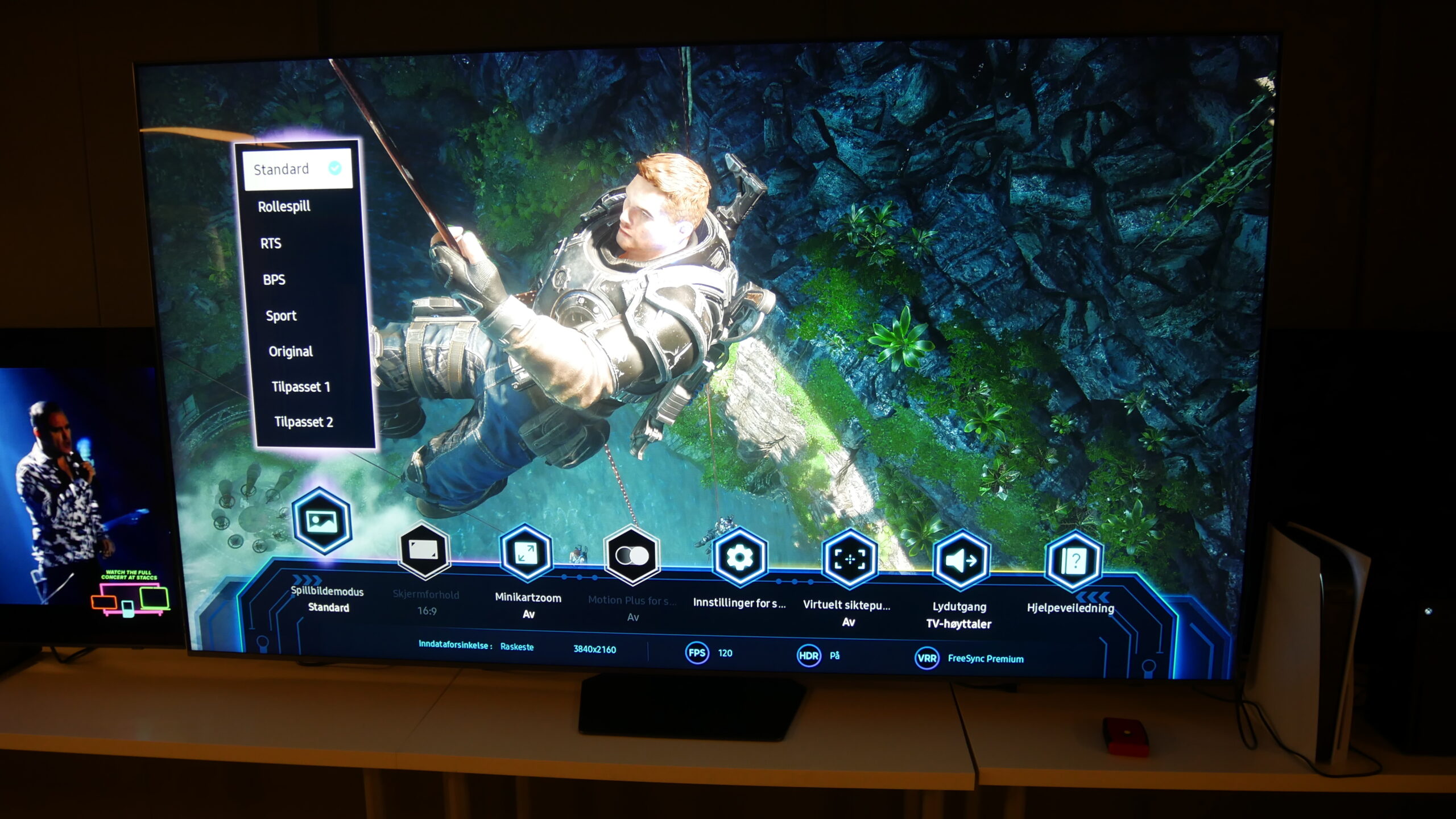
Image quality
Of course, once the initial shell shock from the size has subsided, it’s time to take a more critical look at the image quality. If the contrast or color reproduction isn’t up to scratch, there’s little point in blowing up the image to king-size.
Fortunately, we can confirm that the 98Q80C lives up to the standard. The Samsung screen draws a sharp, detailed and vibrant picture. Movements are smooth and the TV also manages to maintain good focus during quick pans. Image processing works well and the Samsung display does a good job of upscaling different types of video sources and signal qualities to 4K quality.
The image quality is generally excellent. To put things into perspective, we had two recognized OLED displays (Samsung S90C and LG OLED C3) standing next to it as references. And while these can undoubtedly offer even more accurate and nuanced picture quality, the TQ98Q80C comes impressively close in several areas.
Color reproduction is one of the Samsung monitor’s strong points. The Q80C delivers both strong and nuanced colors, and among the many picture modes, we preferred the movie mode as the most neutral. However, to enjoy good color reproduction, you need to sit directly in front of the screen, as colors off to the side are noticeably more pale and washed out. The viewing angle on this screen is therefore not the best.
The Samsung monitor has good brightness as long as you turn off “Eco mode” and power saving so that the brightness is not reduced by EU regulations. Without limitations, the Q80C performs to around 700 nits (10% window), and up to 500 nits with full screen white. That’s roughly in line with the TCL C735 we’ve reviewed in the past, but a far cry from high-end models like the Samsung QN95C, which can deliver up to double that.
When we watch sports and movie scenes with a lot of light on the Samsung screen, it makes a solid impression. HDR effects such as sunlight, flames and the like also have a good, if not exactly dazzling, intensity.
It is mainly in high-contrast scenes with a lot of light and darkness at the same time that the Q80C has some challenges compared to OLED displays. Here, Samsung seems to prefer to dim the brightness to maintain a good black level in the dark parts. We partially solved this by setting the local dimming to “low”.
We also note that the Samsung display has a relatively glossy screen surface, which can be unfortunate with such a large screen surface. It would therefore be a good idea to avoid placing it near windows and/or use light-dimming curtains to reduce reflections from the surroundings.
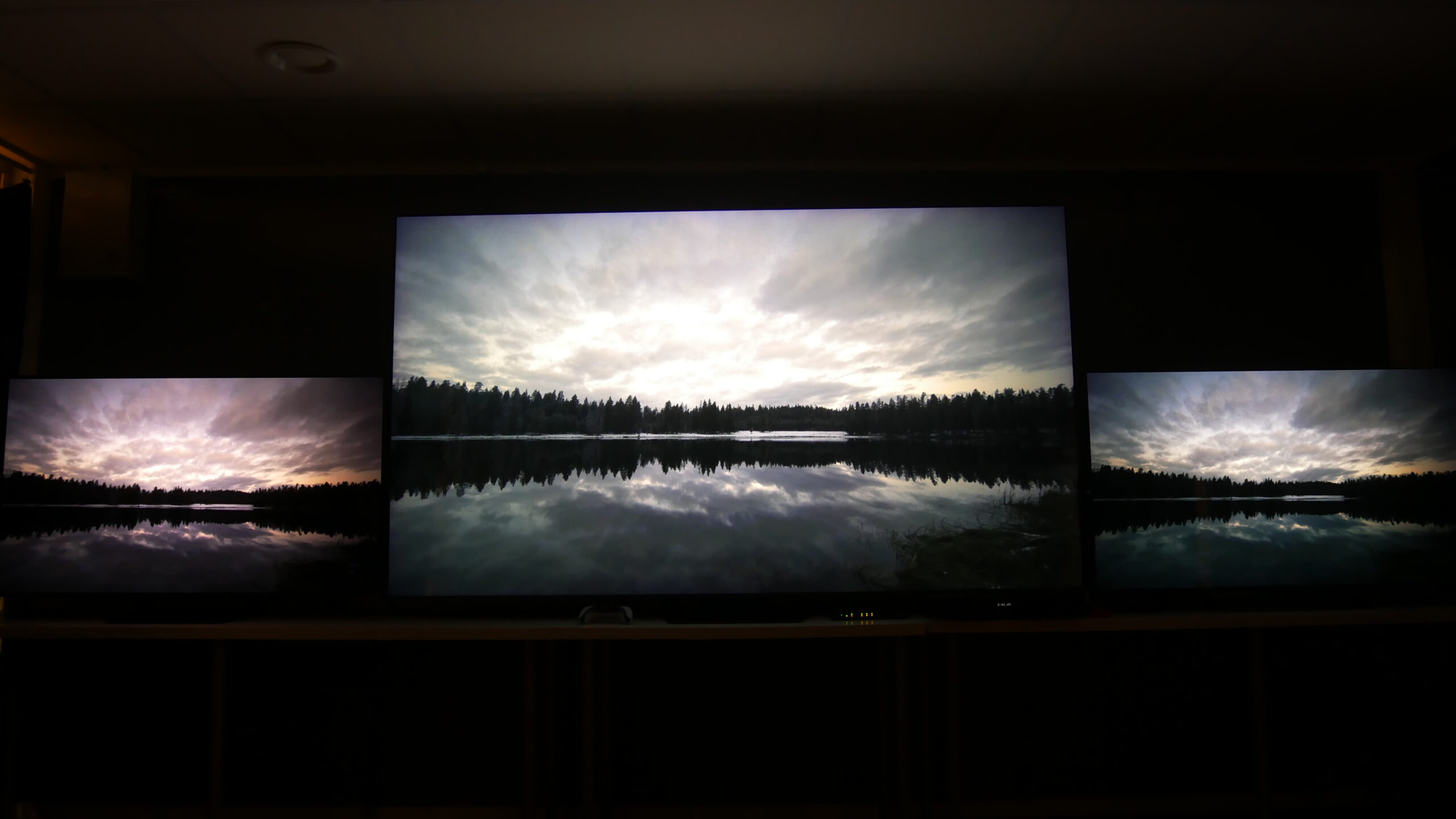
Competitors
Aside from the above complaints, which are fairly typical for LCD, we think the Samsung monitor delivers good picture quality overall. But it’s not alone in this.
The big question for many is how the Samsung monitor compares to the TCL 98C735, which we tested last year. And here there are definitely more similarities than differences: The two monitors deliver the same performance in terms of color, contrast and brightness.
Aesthetically, there’s no doubt that the Samsung Q80C is slightly more beautiful to look at, as far as a 98-inch beast can be called beautiful. It’s also the most practical, thanks to the central stand that makes it easier to position the screen. Samsung also has slightly better connectivity options, including the four HDMI 2.1 ports.
For some, the Tizen user interface itself will also be an argument for choosing Samsung, although many also prefer Google TV.
The biggest challenge is the price difference, because although Samsung has some clear advantages in design and ease of use, it can be hard to justify the price difference over the TCL 98C735 as the overall picture quality is so similar.
Sound quality
99% of those considering such a colossal TV will probably match it with an appropriate sound system. Still, it’s nice to hear that Samsung has done a good job with the built-in speakers.
The Q80C has a 2.2-channel audio system with an output power of 40 watts. The speakers are placed on the underside with enough distance between them to ensure that the soundstage is both big and wide with some stereo effect. Voices come out well and the soundstage matches the size of the screen well.
That said, it obviously can’t compare to the power and clarity of a soundbar or a separate speaker system. The Samsung monitor supports Dolby Atmos surround sound via HDMI eARC, so connecting to a compatible soundbar is easy.
Conclusion
This giant Samsung display delivers a viewing experience like no other. It’s a TV that sucks you into the action with a large, contrasting and colorful picture.
Such a beast of a TV can’t be hidden away, but Samsung has made sure to give the Q80C some practical touches in the form of a center-mounted base, slim framing and great connectivity.
The price may seem high compared to the competition on the market, but it will be interesting to see how it performs over the course of the season. One thing is for sure: Once you get used to the sight of a 98-inch, 85″ can seem a little small!

We think
The colossal Samsung display delivers a sharp, high-contrast image with good brightness. Despite its size, it's relatively easy to position, thanks to a convenient central stand. The price is higher than the main competitor from TCL, and you have to accept that the Samsung screen does not support the Dolby Vision HDR format, which is widely used for movies, series and gaming.
7999 €
Specifications
- Size/type: 98″ 4K QLED LCD
- Resolution: 3840 x 2160 (4K Ultra HD)
- Operating system: Tizen
- Inputs: 4 HDMI (4 x 2.1), 3 USB
- Outputs: Optical digital audio output, HDMI eARC
- HDR: HDR10+
- Dimensions and weight: 218 x 125 x 5 cm (WxHxD), 65.8 kg
- Other:
- Web: samsung.com
